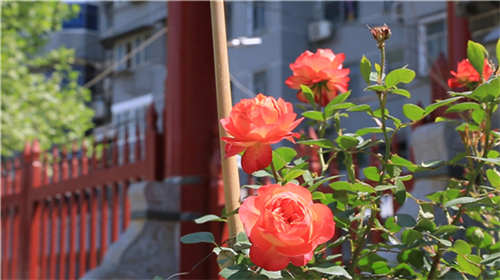豹纹守宫的喂食时间表(生肉 未翻译)
A nutritious and varied diet plays a massive role in the life of a leopard gecko.
Not only does a proper diet go a long way to keeping your gecko healthy, but it is also a great way to add enrichment to your pet’s life.
Hand-feeding your leopard gecko gives you a chance to bond with your pet, and let them chase after crickets allow them to use their hunting instincts.
While it all sounds very exciting for your pet, feeding time may seem very confusing for new leopard gecko owners.
Most of this confusion is centered around their leopard gecko’s feeding schedule.
As a general rule, baby leopard geckos will need to be fed every day, while juveniles from 6-12 months old should be fed every other day. Adult leopard geckos have a more relaxed feeding schedule, as they only need to eat every 3-4 days.
However, feeding a leopard gecko goes beyond just knowing how often to feed them.
A responsible leopard gecko owner should also be educated about when and how to feed their reptiles.
Read on for more information on the best time of day to feed your leopard gecko, which insects are the healthiest, and the supplements you should be adding to every meal.
The Best Time Of Day To Feed Your Leopard GeckoUnlike diurnal species, which are more active during the day, leopard geckos are crepuscular reptiles.
This means they are the most active between dusk and dawn, usually when they hunt.
To coincide with a leopard gecko’s instincts, it is best to feed them in the evenings, usually between 7-9 pm.
This is when a leopard gecko is most active after it has spent the day sleeping and relaxing.
Feeding a leo at any other time will likely disrupt its usual sleep cycle.
Too many sleep disruptions will cause serious health problems for your leopard gecko.
It is best to establish a feeding routine for your gecko and stick to feeding it at close to the same time for every feeding.
How Often You Should Feed Your Leopard GeckoHow often you feed your leopard gecko entirely depends on its age.
Baby geckos grow very quickly, and they need to be fed more often than adults to establish healthy growth.
Juvenile leopard geckos between the ages of 6-12 months grow less rapidly than babies.
Since they are still in the developing stages, they will need to be fed more often than adults but less frequently than the babies.
Once a leopard gecko reaches the adult stage of life, they are no longer growing, but instead, they are eating to maintain a proper weight and good health.
Because of this, you should feed an adult leopard gecko every 3-4 days.
The following table provides a handy reference for how often to feed a leopard gecko at every life stage.
What To Feed Your Leopard GeckoLeopard geckos are insectivores, which means their diet is made up entirely of insects.
It is essential to feed your gecko a variety of insects.
This is not only important for their health, but it also keeps your leopard gecko from becoming a picky eater.
As a rule of thumb, the size of insect feeders should never be larger than the space between a leo’s eyes.
If you want more options than these, check out this list of leopard gecko food alternatives.
Staple InsectsStaple insects are the ones you will feed to your leopard gecko at every meal.
Offer your gecko a variety by rotating these insects throughout the week.
Staple insects are low in fat and are a good source of protein.
They include:
Crickets
Dubia roaches
Phoenix worms
Silkworms
Hornworms
If you feed your leopard gecko hornworms, they should be captive-bred only.
Wild hornworms are toxic, so do not take one from your garden and feed it to your gecko.
Insects As TreatsThese insects are generally very high in fat and offer very little nutritional content.
They should only be fed as a treat once per week at most.
In addition to their high-fat content, leopard geckos find these types of insects to be very delicious.
If your leopard gecko is fed too many of these insects, it might reject more nutritious foods.
Types of “treat” insects include:
Wax worms
Super worms
Mealworms
Many leopard gecko owners mistake mealworms for a staple insect.
However, in addition to their slightly higher fat content, mealworms have tough exoskeletons, making digesting them difficult for most reptiles.
It is safer to only offer your leo a mealworm or two as a treat once a week.
The chart below compares common feeder insects’ fat and protein content and gives you guidelines on how often to feed them to your leo.
Foods You Should Never Feed To Your Leopard GeckoFireflies, lightning bugs, and other glowing insects are toxic and should never be fed to your leopard gecko.
Wild hornworms are also toxic.
You should also avoid feeding your leopard gecko any wild-caught insects, as most of them are infested with dangerous parasites.
Parasites will make your leopard gecko very ill and even cause death if left untreated.
In addition to avoiding these potentially dangerous insects, you should never feed your leo cat food, dog food, or table scraps.
Gut Loading Feeder InsectsNo matter which insects you choose to feed your leopard gecko, they should all be gut loaded before mealtime.
Gut loading is the process of feeding live insects a very nutritious diet of vegetables and greens.
Nutritious foods made just for feeder insects are also commercially available.
The feeder insects will then pass these nutrients to your leo when they are digested.
You should feed insects to your gecko within 24 hours of gut loading.
Otherwise, the insects might completely digest their food and defecate, leaving them empty and offering little nutritional value other than protein.
WaterYou should offer fresh, clean water to your leopard gecko at all times.
Leopard geckos may also soak in their water dish, so you will need to watch the water quality and change it when it becomes dirty.
A shallow, heavy water dish is the best option because the weight of the dish avoids spills, and it should be shallow enough to keep your leo from drowning.
Avoid distilled or softened water, and instead, use tap or spring water.
Tap water and spring water contain vital minerals, which are good for your leo’s health.
How Often To Add SupplementsIt is crucial to add calcium and multivitamin supplements to your leopard gecko’s diet to prevent health issues.
Even though a varied insect diet is healthy for your leo, these insects often lack essential nutrients such as calcium, vitamin D3, and vitamin A.
Without enough calcium in its diet, a leopard gecko will develop a crippling illness known as metabolic bone disease.
When a gecko has a calcium deficiency, its body will leach calcium from the bones.
This leads to bone softening and deformities and paralysis, lethargy, and uncontrollable shaking.
The metabolic bone disease does not have a cure, and it is often fatal.
Vitamin D3 is important because it helps a leopard gecko’s body metabolize and process calcium properly.
Many calcium supplements include D3, which eliminates the need for a separate D3 supplement.
UVB lighting also allows a leopard gecko to synthesize D3 from UV rays.
Vitamin A is also essential for your leo’s diet because it prevents eye problems and aids in shedding and breeding.
And check out our post on leopard gecko eye infections and other problems to learn more about potential eye issues.
Too Much Vitamin A May Also Be A Bad ThingHowever, the problem with vitamin A in reptiles is how it builds up in the body.
Too much vitamin A will cause an overdose and lead to numerous health problems.
When choosing a multivitamin supplement, read the label to ensure it includes beta carotene instead of vitamin A.
Leopard geckos can synthesize beta carotene into vitamin A, and their bodies will only synthesize as much vitamin A as they need.
This prevents excess vitamin A from accumulating in the body and causing health issues.
Calcium and multivitamin supplements come in powder form, and they should be given to your leo by lightly dusting its feeder insects right before mealtime.
Avoid caking the supplements on, as this reduces the palatability of the insects, and your leo may not eat them.
To dust feeder insects, you will need a plastic container with a lid.
Add a small amount of the supplement powder to the container, and then add the insects.
Cover with a lid and shake gently to coat the insects.
An important thing to remember is not to mix your supplement powders.
In other words, do not offer your leo calcium on the same day as a vitamin powder.
The following table shows how many supplements should be given to baby, juvenile, and adult leopard geckos.
Since baby and juvenile geckos are fed more frequently, they should be given supplements more often than adults.
How Much To Feed Your Leopard GeckoThere are two schools of thought regarding how much to feed your leopard gecko.
Some leopard gecko owners go by the rule of 2 insects for every inch of body length.
Other leopard gecko keepers place several insects in the enclosure and allow their leopard gecko to eat as much as they want within 15 minutes.
After 15 minutes, the remaining insects are removed from the enclosure.
This step is crucial, as some insects (especially crickets) will nibble at your leo, causing injury.
Since crickets are excellent at hiding, be sure to remove all of the remaining ones in the tank.
To make feeding time more manageable, you may want to consider feeding your leo in a separate smaller enclosure.
This feeding tank should have a simple substrate, such as paper towels or newspaper, and nothing else.
This gives the insects nowhere to hide, making cleaning up after mealtime much easier.
Either of these feeding methods is perfectly fine for your leopard gecko.
To avoid excessive weight gain, you should regularly weigh your leo using a small kitchen scale.
This will let you know if your gecko is overeating or gaining weight too quickly.
Never put your leopard gecko on a diet without consulting a veterinarian first.
Aside from ensuring your female leopard gecko is not gaining weight due to pregnancy, a veterinarian will be able to evaluate your pet’s weight and recommend a safe diet plan.
If your leo needs to go on a diet, it should be done gradually to avoid possible nutritional deficiencies from under-feeding.
Feeding Supplies For Leopard GeckosWhether you decide to feed your leo by hand or use a food dish, there are some basic supplies you will need to make mealtime easier for both you and your gecko.
Water DishYou should always provide your gecko with fresh, clean water.
To do this, you will need to place a heavy, spill-proof shallow bowl in the enclosure.
Ceramic bowls are naturally heavy and easy to clean.
Since leopard geckos often like to soak in their water bowl, the bowl needs to be shallow enough to keep your leo from drowning.
You may also need to clean the bowl and refill it with fresh water several times a day because it will get dirty quickly due to your leo’s soaking habits.
Calcium BowlBecause leopard geckos need plenty of calcium, some owners choose to make calcium available to their reptiles at all times by providing calcium powder in a shallow dish.
However, doing this poses a risk for calcium overdose if your leo licks it too much.
Since juvenile leos need more calcium than adults, this may only benefit a younger gecko.
It is also difficult to gauge how much calcium your leo is getting every day.
Some geckos do not like the taste and will not take calcium from a dish at all.
Dusting feeder insects with calcium powder is often a more reliable supplementation method.
If you decide to use a calcium dish, you should only use a calcium powder formulated without vitamin D3 to prevent an overdose of the vitamin.
Food DishThere are many different types of food dishes available for reptiles.
These bowls are often deep and have smooth sides to prevent insects from escaping.
These feeding dishes work exceptionally well for feeding worms and some types of roaches because these insects cannot escape.
A food bowl is less useful when feeding crickets because these insects can escape any dish quite easily.
As previously stated, you may find it helpful to use a separate enclosure for mealtimes to prevent stray insects from hiding and wreaking havoc in the main enclosure.
Feeding TongsYou may hand-feed your gecko using your fingers, but feeding tongs make this task much easier.
These special feeding tongs feature a soft rubber tip to avoid any potential injury to your leopard gecko.
Feeding your leo by hand is a great way to bond with your pet, and many owners use this method, sometimes in combination with using a food dish.
Feeding Tongs 15" 2 Pcs Super Thick Stainless Steel Forceps Curved and Straight
标签: LETHARGY









